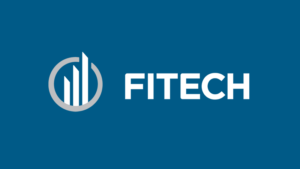A major shift is underway in the licensing of software for business. Providers now offer multiple software licensing models, from standalone licenses to Software as a Service (SaaS). On the business-to-consumer side we’ve seen it in everything from email to iTunes to Microsoft Office to QuickBooks. Each licensing model has different costs and operating benefits. So how does a company determine which is the right one for them?
When comparing purchased licenses and SaaS, think of it as the difference between buying a car versus leasing a car. If you buy the car, you keep that model year (and the features you bought it with) for as long as you want, then buy a new car after you have used that model year. You probably keep that model year longer than you wanted to or expected to.
If you lease the car, you get the latest features for the next two-to-three years, but then you hand the keys back and get the brand new version with all the latest features. Leasing over the long term is much more expensive, BUT you are always under warranty and you are always getting the newest technology. Buying is less expensive in the long term, but you generally give up key new features that emerge over the life cycle of the product.
Software is very similar. If you buy the license outright, you pay for it once and can use that version of the software for as long as you like. You can even buy “assurance,” which is much like an extended warranty, to get support on your license. This is more expensive up front, as you have to pay 100% of the amount when you buy the license. You might also have to buy specific hardware to support the software.
SaaS gives you access to the license for a cost-effective monthly fee and is generally cloud- based. When you stop paying monthly, you no longer have access to those licenses. However, the out- of-pocket costs will be significantly lower and there is generally no hardware to buy.
The Positives and Negatives of SaaS for Businesses
As with most things, there are both positives and negatives associated with SaaS on the business-to-business side, depending on the size of the user company.
SaaS offers a less expensive alternative with a low barrier to entry and is ideally suited to small-to-medium-size businesses. SaaS usually requires a lower cash outlay, and even if the licenses are generally the same, the savings in platform hardware and software are significant. This is GREAT for businesses where the high cost for enterprise systems (like accounting or industry-specific software) is prohibitively expensive.
However, for the larger companies that can more easily afford the licenses, the changeover to the SaaS model can wreak havoc. That’s because SaaS systems are usually cloud-based so they may require specific internet browsers to work. That means that an organization has to plan its upgrade of base operating system and web browser software around the software’s requirements.
We have seen firsthand how this causes major internal conflict—older applications that larger enterprises may be running need older browsers, while the SaaS client needs a newer browser. Moreover, the SaaS providers are quickly ELIMINATING their option for clients to purchase or upgrade their core onsite license, making SaaS their only option going forward!
The results?
- The long-term cost model will change.
- Clients that value their data, which is under their control, will be forced to switch providers.
- This in turn will require them to upload their intellectual property to the SaaS provider’s cloud which may also be hosting a competitor’s data on the same system.
While the changeover to the new service model may cost providers a portion of their existing client base (since some clients may be reluctant to have their data hosted in a cloud), SaaS does come with distinct advantages. The provider can control the upgrades to their products very easily and offer new enhancements to their entire client base almost simultaneously, while ensuring a rock solid and predictable income stream to the company.
We expect that businesses that align with software partners that afford the greatest flexibility in licensing will strike the best balance, at least in the short term. But this is an emerging trend to watch closely and each software provider is making its own rules. Buyer beware—but be aware of the changing trends as well.


